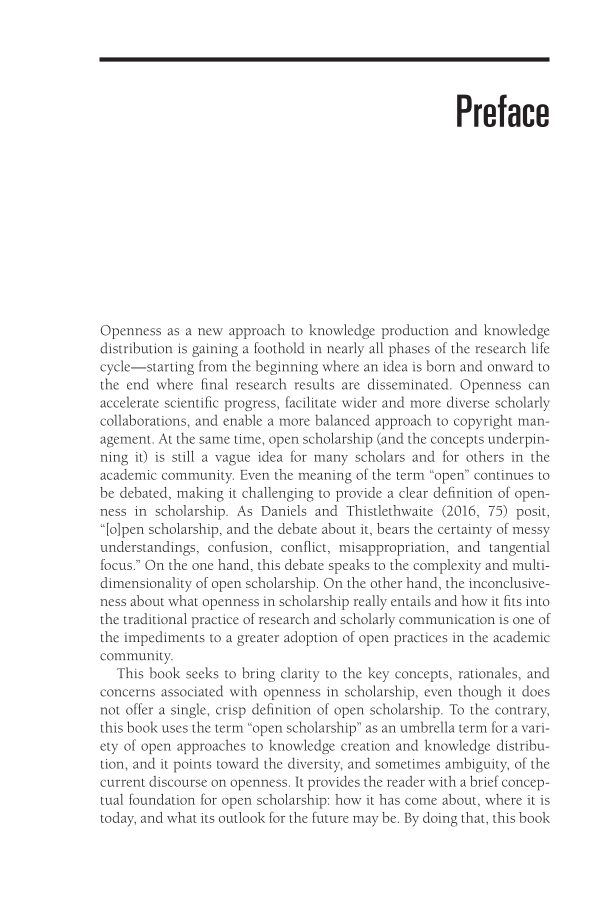Preface Openness as a new approach to knowledge production and knowledge distribution is gaining a foothold in nearly all phases of the research life cycle—starting from the beginning where an idea is born and onward to the end where final research results are disseminated. Openness can accelerate scientific progress, facilitate wider and more diverse scholarly collaborations, and enable a more balanced approach to copyright man- agement. At the same time, open scholarship (and the concepts underpin- ning it) is still a vague idea for many scholars and for others in the academic community. Even the meaning of the term “open” continues to be debated, making it challenging to provide a clear definition of open- ness in scholarship. As Daniels and Thistlethwaite (2016, 75) posit, “[o]pen scholarship, and the debate about it, bears the certainty of messy understandings, confusion, conflict, misappropriation, and tangential focus.” On the one hand, this debate speaks to the complexity and multi- dimensionality of open scholarship. On the other hand, the inconclusive- ness about what openness in scholarship really entails and how it fits into the traditional practice of research and scholarly communication is one of the impediments to a greater adoption of open practices in the academic community. This book seeks to bring clarity to the key concepts, rationales, and concerns associated with openness in scholarship, even though it does not offer a single, crisp definition of open scholarship. To the contrary, this book uses the term “open scholarship” as an umbrella term for a vari- ety of open approaches to knowledge creation and knowledge distribu- tion, and it points toward the diversity, and sometimes ambiguity, of the current discourse on openness. It provides the reader with a brief concep- tual foundation for open scholarship: how it has come about, where it is today, and what its outlook for the future may be. By doing that, this book
Document Details My Account Print multiple pages
Print
You have printed 0 times in the last 24 hours.
Your print count will reset on at .
You may print 0 more time(s) before then.
You may print a maximum of 0 pages at a time.





























































































































































































































